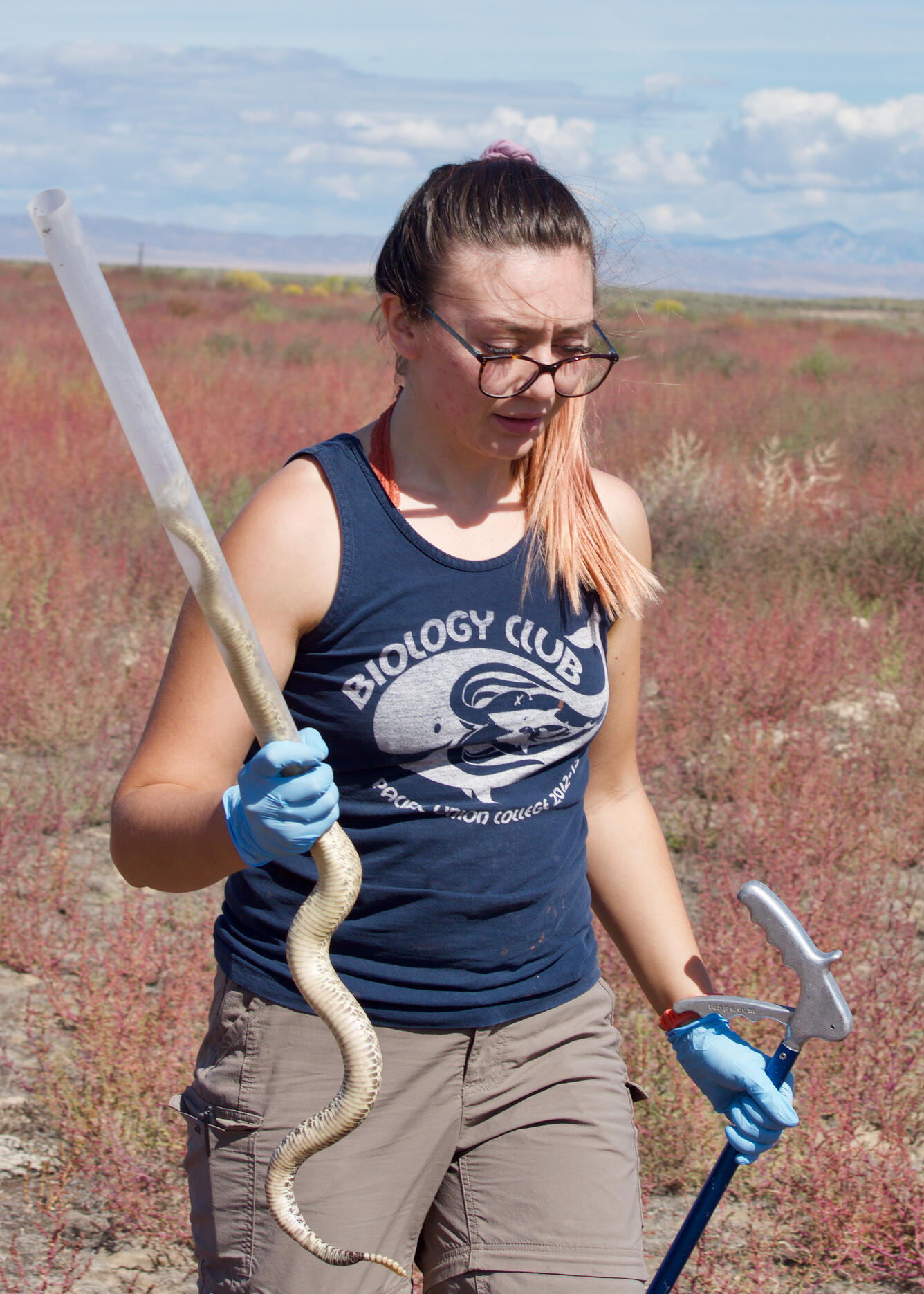Boise State University Master’s student Kristina Parker and a volunteer use snake tongs to catch and hold down a rattlesnake.
Looking for Rattlesnakes on a Sunny Day in Idaho
Boise State University Master’s student Kristina Parker and her volunteer assistants are on the lookout for rattlesnakes on a sunny September day in Idaho.
She is studying how habitat disturbances in the Great Basin, such as wildfire and invasive plants, affect reptile population numbers, their genetics, and connectivity across habitats. Her thesis project is part of a larger study led by Dr. David Pilliod that is looking at changes in reptile abundance over a 40-year period in southwestern Idaho. This study uses survey data dating back to 1977 from the Morley Nelson Snake River Birds of Prey National Conservation Area and is a partnership between the USGS, Idaho Army National Guard, and Bueau of Land Management. Kristina and her crew captured 11 rattlesnakes on this day, two of them being repeat captures from last year at the same hibernaculum – a place where a creature seeks refuge, like a bear’s den. They swabbed each snake for snake fungal disease, took blood samples for RNA analysis, and tagged each snake with a Passive Integrated Transponder, or PIT tag. PIT tags are used to track animal movement and are the same technology as the microchips you can get for your dog or cat to help identify it as yours should they get lost.
Learn more about what the USGS is doing in Idaho by visiting our Forest and Rangeland Ecosystem Science Center and Idaho Water Science Center websites.
All photos by: Justin L. Welty. (Public Domain)
Get Our News
These items are in the RSS feed format (Really Simple Syndication) based on categories such as topics, locations, and more. You can install and RSS reader browser extension, software, or use a third-party service to receive immediate news updates depending on the feed that you have added. If you click the feed links below, they may look strange because they are simply XML code. An RSS reader can easily read this code and push out a notification to you when something new is posted to our site.












